 Multiple episodes to open a series are all the range these days, it seems. This two-part premiere actually showed up a couple of weeks ago after some sort of preview screening, but to be honest that version was so screwed up that I decided to bag it and wait for the official release. The most famous name associated with ID: INVADED is certainly Aoki Ei, a director of some renown and perhaps a bit of infamy. But the writer (always a key figure in original anime), Maijo Otaru, recently made a name for himself with Dragon Dentist (which I liked, even though the writing was actually a bit of a mess).
Multiple episodes to open a series are all the range these days, it seems. This two-part premiere actually showed up a couple of weeks ago after some sort of preview screening, but to be honest that version was so screwed up that I decided to bag it and wait for the official release. The most famous name associated with ID: INVADED is certainly Aoki Ei, a director of some renown and perhaps a bit of infamy. But the writer (always a key figure in original anime), Maijo Otaru, recently made a name for himself with Dragon Dentist (which I liked, even though the writing was actually a bit of a mess).
 As for Aoki his track record is a bit of a mixed bag for me, but there’s no denying his talent. And while visibly low-budgeted, ID (I’m already tired of all those CAPS) certainly has some interesting Escher-esque visual flourishes. It also made me laugh by using whisky icon John Walker (you probably know him as “Johnnie” but the company is known as John Walker & Sons) straight off the bottle pretty much verbatim, right down to the top hat and cane. I guess the production committee is assuming no one at Diageo is an otaku – probably not a bad bet.
As for Aoki his track record is a bit of a mixed bag for me, but there’s no denying his talent. And while visibly low-budgeted, ID (I’m already tired of all those CAPS) certainly has some interesting Escher-esque visual flourishes. It also made me laugh by using whisky icon John Walker (you probably know him as “Johnnie” but the company is known as John Walker & Sons) straight off the bottle pretty much verbatim, right down to the top hat and cane. I guess the production committee is assuming no one at Diageo is an otaku – probably not a bad bet.
 There’s an air of pretentiousness (an endemic problem with anime science-fiction these days, which is why Planet With and Kanata no Astra were such a breath of fresh air) around this entire premiere if you ask me, but it’s not without its interesting elements. We immediately start in post blue-pill mode, as a teenager incongruously voiced by Tsuda Kenjirou (who continues his impression race towards overexposure) – though there’s a reason for that incongruity – wakes up in pieces. The world he’s inside is in pieces, too – literally. He seems to have no memories but he does remember that he’s “the great detective” – and when he discovers the corpse of a young girl, he remembers she’s called “Kaeru-chan“.
There’s an air of pretentiousness (an endemic problem with anime science-fiction these days, which is why Planet With and Kanata no Astra were such a breath of fresh air) around this entire premiere if you ask me, but it’s not without its interesting elements. We immediately start in post blue-pill mode, as a teenager incongruously voiced by Tsuda Kenjirou (who continues his impression race towards overexposure) – though there’s a reason for that incongruity – wakes up in pieces. The world he’s inside is in pieces, too – literally. He seems to have no memories but he does remember that he’s “the great detective” – and when he discovers the corpse of a young girl, he remembers she’s called “Kaeru-chan“.
 There’s a lot you have to take as read with ID, because it doesn’t bother with a whole lot of exposition (though what it does offer tends to be clumsy exposition by explanation). Sakaido (as the kid’s name will turn out to be) is in something called an “ID Well”, which is inferred to be made from someone’s subconscious. This is a play on words, a “dad joke” as one of the characters refers to it – the Japanese for “well” – the water kind – is “ido”. And of course any sci-fi fan worth their salt should be familiar with “monsters from the id”. The id, for non-Freudians, is the instinctual part of the mind in his model – present from birth and the place of desires sexual, violent and otherwise, geared towards survival and propagation.
There’s a lot you have to take as read with ID, because it doesn’t bother with a whole lot of exposition (though what it does offer tends to be clumsy exposition by explanation). Sakaido (as the kid’s name will turn out to be) is in something called an “ID Well”, which is inferred to be made from someone’s subconscious. This is a play on words, a “dad joke” as one of the characters refers to it – the Japanese for “well” – the water kind – is “ido”. And of course any sci-fi fan worth their salt should be familiar with “monsters from the id”. The id, for non-Freudians, is the instinctual part of the mind in his model – present from birth and the place of desires sexual, violent and otherwise, geared towards survival and propagation.
 It’s clear that this is all part of some sort of law enforcement operation, and that the field agents and the ones in the control center have a certain antipathy towards each other. There’s also a mysterious doohickey called a “Wakamusubi” which can read killing intent, which one of the field agents uses to her advantage in the episode’s cleverest conceit, and the aforementioned Mr. Walker, who appears to be some sort of amalgam of human subconsciousness and is the link that connects the various serial killers associated with the ID wells. As for Sakaido I’d pretty much guessed he was a prisoner being used by the cops early on, so that came as no surprise. Kaeru appears to be a representation of his deceased daughter.
It’s clear that this is all part of some sort of law enforcement operation, and that the field agents and the ones in the control center have a certain antipathy towards each other. There’s also a mysterious doohickey called a “Wakamusubi” which can read killing intent, which one of the field agents uses to her advantage in the episode’s cleverest conceit, and the aforementioned Mr. Walker, who appears to be some sort of amalgam of human subconsciousness and is the link that connects the various serial killers associated with the ID wells. As for Sakaido I’d pretty much guessed he was a prisoner being used by the cops early on, so that came as no surprise. Kaeru appears to be a representation of his deceased daughter.
 I don’t know what I make of all this really. The core mythology is a mixed platter of sci-fi and Shinto mysticism, apparently, and while it’s not at all uninteresting it does have rather a slapped-together feel to it. The dialogue is a problem too – it’s quite stilted and overdramatic in the manner of writing that’s taking itself way too seriously. I don’t know why anime sci-fi seems to have evolved in this direction of overcomplicated mumbo-jumbo and pseudo-intellectualism, but there’s an increasingly same-y feel to shows like ID that’s making it more and more crucial that the new entries do something to distinguish themselves. That hasn’t happened yet with this one, but there’s enough here to suggest it’s not outside the realm of possibility.
I don’t know what I make of all this really. The core mythology is a mixed platter of sci-fi and Shinto mysticism, apparently, and while it’s not at all uninteresting it does have rather a slapped-together feel to it. The dialogue is a problem too – it’s quite stilted and overdramatic in the manner of writing that’s taking itself way too seriously. I don’t know why anime sci-fi seems to have evolved in this direction of overcomplicated mumbo-jumbo and pseudo-intellectualism, but there’s an increasingly same-y feel to shows like ID that’s making it more and more crucial that the new entries do something to distinguish themselves. That hasn’t happened yet with this one, but there’s enough here to suggest it’s not outside the realm of possibility.


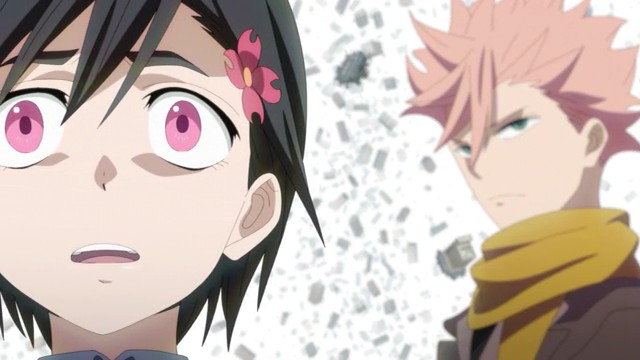
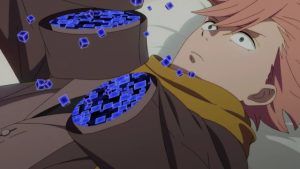







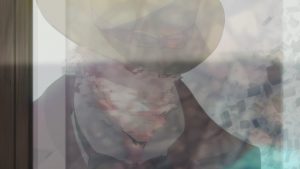


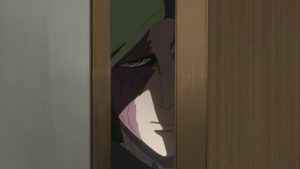











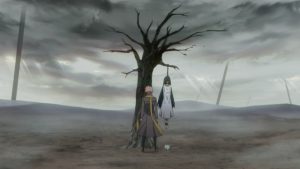
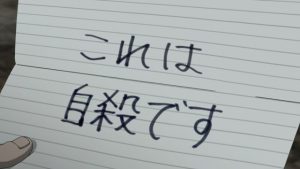



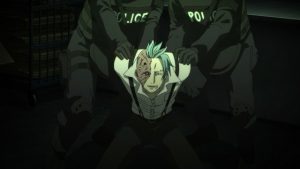






Wiiii!!
January 7, 2020 at 10:48 pm“I don’t know why anime sci-fi seems to have evolved in this direction of overcomplicated mumbo-jumbo and pseudo-intellectualism”
My guess is that one of the several reasons comes from other media (mainly books and video games, specially visual novels) that Japanese consume which, as they are more narrative driven, they can deliver better those kind of stories.
The problem, of course, is that it doesn’t necessarily translate as well in animation (YU-NO anime would be a recent example), but between that and successful sci-fi series such as Evangelion or Steins;Gate might have created certain expectations for this genre.
Guardian Enzo
January 7, 2020 at 11:20 pmEva is… Well, Eva. It’s in its own category for me, really. It’s so batshit that it kind of blows through the pretentiousness a bit. Steins;Gate, OTOH (and we’re talking about the original series here, not the sequel) – that was certainly full of mumbo-jumbo, yes. But what set it apart was how irreverent it could be, which is the best antidote for self-importance there is. And how the mythology, even the pseudo-science, came together so elegantly. It felt anything but slapped together.
I wonder if the popularity of Gen’s anime efforts has contributed to make this problem worse. He’s certainly self-important and pretentious most of the time, but what makes it worse is that he’s better at it than the people who copy him. Just look at the non-Gen sequels to Gen originals for proof of that.
Wiiii!!
January 7, 2020 at 11:53 pm“I wonder if the popularity of Gen’s anime efforts has contributed to make this problem worse”
And where was Urobuchi working before he got into anime? (Visual) novels. He won’t suddenly change tropes he was already used to write when transitioning from more written media to a more visual one. Romeo Tanaka and Kotaro Uchikoshi are other such examples.
Moreover, anime, novels and videogames have always been nurturing from each other, it’s just that certain elements are more prominent than before.
Bel
January 7, 2020 at 11:35 pmI kind of like it, layman-psychoanalysis and techno-bubble and all. John Walker might have been a reference to Haruki Murakami’s “Kafka on the Shore”. In the book, there’s a character who borrows the name Johnnie Walker from the whisky, and let’s just say he’s probably not human (it’s complicated).
Wiiii!!
January 7, 2020 at 11:57 pmI’m not much a fan of Haruki Murakami’s works, but I swear that they really feel more visual novel or anime-like than a simple novel. “Hard-Boiled Wonderland and the End of the World” is one of them, and certain artist, such as Yoshitoshi Abe, have stated to have been influenced by that story.
Guardian Enzo
January 8, 2020 at 12:14 amI adore Kafka on the Shore (always thought it would make a fantastic anime, actually) but I’d totally forgotten about the Johnnie Walker thing.
The thing about this John Walker though, is he looks so damn much like the whisky logo.
Bel
January 8, 2020 at 2:53 amWell, Kafka on the Shore’s Johnnie Walker was supposed to look like the whisky logo too… (And I love that book too.)
Litho
January 8, 2020 at 1:21 amRE: Overcomplicated mumbo jumbo and pseudo-intellectualism
I’ll blame the light novels for that – specifically the Annoyingmiya Haruhi and BlahBlahGatari franchises.
Guardian Enzo
January 8, 2020 at 9:29 amNo doubt a factor.
Krize
January 9, 2020 at 3:52 am“I don’t know why anime sci-fi seems to have evolved in this direction of overcomplicated mumbo-jumbo and pseudo-intellectualism, but there’s an increasingly same-y feel to shows like ID that’s making it more and more crucial that the new entries do something to distinguish themselves.”
This all seems particularly onerous when we’ve so recently had an anime come out of an older work (Boogiepop & Others) to remind us of how this genre used to be at it’s best. It’s downright depressing to go from the penultimate episodes of Boogiepop’s Imaginator arc to more modern works.
Guardian Enzo
January 9, 2020 at 6:43 amWell… One might use as a metaphor the difference between LNs of 20 years ago and LNs of today. And though ID and many of these sci-fi series are originals, they do seem to be trying to copy the current LN style.